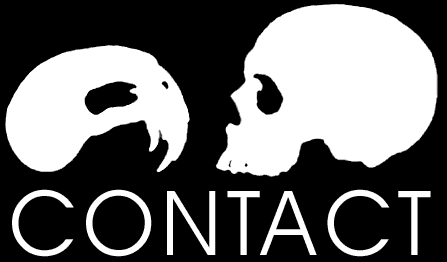Each year we meet to promote the integration of human factors into space age research and policy, emphasize the interaction of the Arts and Sciences and their technologies, and develop ethical approaches in cross-cultural contact, whenever and wherever it occurs. The first CONTACT occured in Santa Cruz, California, in 1983. It began as a conference exploring the connections between anthropology and science fiction, because, it seemed to me, anthropologists study alien cultures and science fiction writers create them. We attracted the best of both fields right from the start: e.g., award-winning writers Larry Niven, C.J. Cherryh, Jerry Pournelle, Poul Anderson, Dave Brin and Greg Bear. Our most reknowned anthropologists were Paul Bohannan, past president of the American Anthropological Association and Dean of Social Sciences at USC, Ben Finney, chairman of the Anthropology Department at the University of Hawaii and former NASA fellow, and Reed Riner, editor of "Cultural Futures Research." Joel Hagen, Rich Sternbach, William K. Hartmann and other artists transformed our ideas into visions of the future. Over the years, however, CONTACT has evolved into an international and interdisciplinary professional organization and nonprofit scientific and educational corporation. It now includes space scientists from NASA, JPL, Los Alamos and SETI, as well as social scientists, educators, philosophers, lawyers, humanists, futurists and students and enthusiasts in all fields.. We are proud of the distinguished professionals in the sciences and arts who devote their time and energy to CONTACT. Our work has been presented at scientific meetings, published in professional journals, featured in the national media and nonfiction books and texts, and documented in a PBS video. Simulations: The Bateson Projects
Since 1983, we have developed several simulations, called "Bateson Projects," as professional thought experiments, scientific design studies and educational curricula for all levels. Some of these are described below.
Solar System Simulation (SolSys)The Solar System Simulation, originated at CONTACT VI in 1987, was developed into an intercollegiate curriculum at Northern Arizona University as an honors course in Anthropology and Engineering. Since 1990, it has included student teams from many colleges and universities around the globe.The teams represent colonies in a simulated future human community in space. Cabrillo students have participated for credit every year since its inception and our team traditionally inhabits the L-5 Colony circling Earth. Teams communicate via Internet e-mail, websites and a Multiple User Domain (MUD), a text-based, virtual reality program. Students are directed and encouraged by their local faculty advisors and by a board of professional consultants in the social and space sciences. The students build a learning environment in virtual space and explore communication problems in their community of remote "colonies." The computer-supported, interactive virtual reality environment in which the the simulation is conducted can be dramatically demonstrated. An audience visits sites in the future Solar System, where they can tour a city in space, walk on the moon and talk to Martians. This simulation received national recognition in 1994. A group of federal agencies representing education for the future, including the Coalition for Networked Information and the American Association of Higher Education, selected SolSys, out of a wide field of proposals, as one of two projects in the country to be presented at the EDUCOM convention. The judging committee stated that the project "represents best practices in the use of networking and networked information in teaching and learning." Search for ExtraTerrestrial Intelligence Simulation: (simSETI)What would happen if our search for extraterestrial intelligence suddenly turned out to be successful?Beginning in 1991, invited experts produced our first remote (i.e., communication-only) contact simulation. Over a three-year period, a team of scientists, writers and artists, organized by Poul Anderson, created a credible and coherent extraterrestrial civilization. Its representatives produced and sent messages to Earth from their home planet light years away. An Earth receiving team, representing various national and global communities of interest, first detected the signal's presence during CONTACT IX and worked for two years, via Internet and connected virtual networks, to understand it, simulate our world's reaction, and formulate a response. At CONTACT, the public followed the progress of the scenario via daily newscasts and press conferences, and eventually , after the final broadcast, were introduced to the "extraterrestrials,' who described their world and its cultures, displayed their artefacts, and explained their motives and expectations. SimSETI was an attempt to construct a reasonable and realistic simulation that might be of practical value in the event of an actual first contact of the kind that NASA's Search for Extraterrestrial Intelligence project anticipates. We hoped to provide a test of the protocol which has been developed by SETI for such an eventuality. Several of those involved in devising that protocol, e.g., Ben Finney (Anthro/ U Hawaii) and Seth Shostak (SETI), were present for the demonstration. Jim Funaro, Founder Department of Anthropology, Cabrillo College, Aptos CA 95003
|

